Cádiz is Western Europe’s oldest continuously inhabited city. It was founded by the Phoenicians around 1100 BC, but a severe earthquake in 1755 destroyed many of the city’s Old Town structures, and it appears much newer. However, winding cobblestone streets, whitewashed buildings, and most of the Old Town’s surrounding wall remain, lending the city eclectic Mediterranean charm.

Cádiz is a major Mediterranean port situated on a peninsula surrounded by a formidable seawall and azure blue water. The above picture is the view from our hotel’s rooftop.
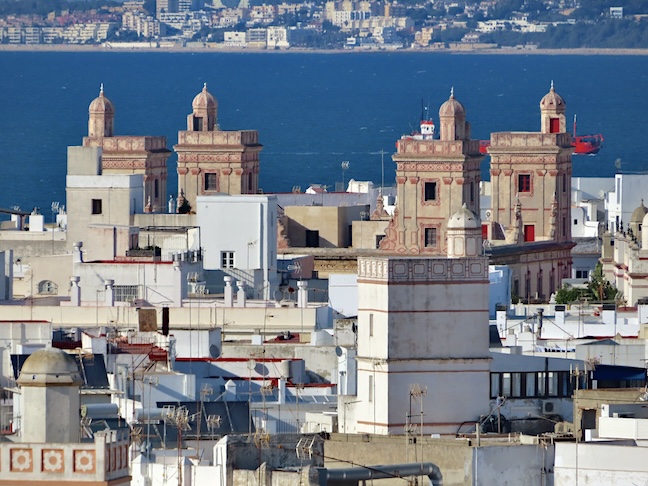
Our group is staying in the Hotel Casa de las Cuatro Torres, the house of the four towers you can see above. Local building codes in 1736 prohibited houses from having more than one lookout tower. The owner built four connected houses with a tower for each at the corners.

Rick Steves, tour guide Augustin, introduced us to our local tour guide at the steps of our Hotel for our walking tour of the city on our first morning. We were the only guests in the renovated portion of a huge old home, so the hotel workers oversaw our departure.

In the center of Plaza de España is the imposing Monument to the Spanish Constitution of 1812. For a constitution that was only sporadically in effect during 1812, 1814, and between 1820 and 1823, the document’s principles had a major impact on nationalism throughout Western Europe and the Americas.

The Genovés Park’s central avenue is flanked by sculpted Cypress and date palms. The park boasts over 150 species of trees and shrubs, making it a botanical wonder.
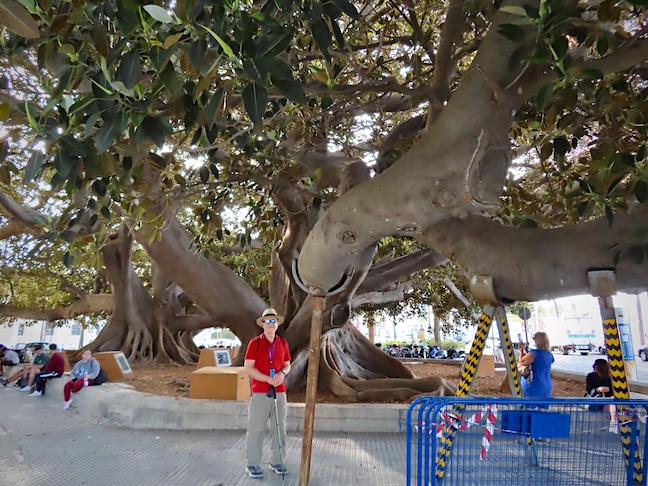
You may think you’ve seen a large ficus tree, but these two are so massive their branches must be supported. They were planted by two nuns who got sick on their way to northern Spain from India and planted their seeds for trees here near Caleta Beach before they died.
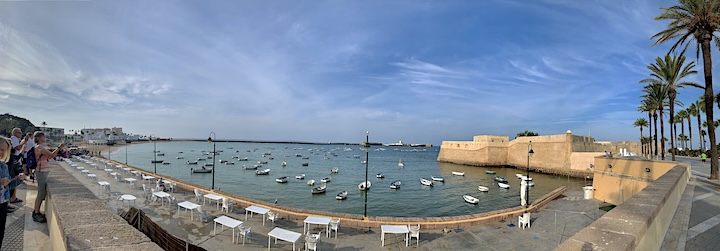
La Caleta Beach is situated between the San Sebastián and Santa Catalina castles in a natural harbor protected by reefs. It is the smallest and most visited beach in Cádiz.
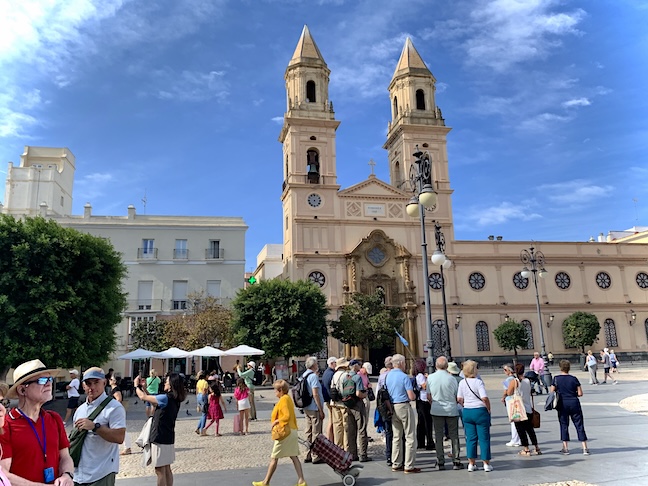
It’s always a bit of a surprise when the narrow street you’ve been stumbling along on cobblestones between four and five-story buildings spills into a giant open area or plaza. Suddenly, surrounded by large groups of people and beautiful architecture, you must pause and take it in before attempting to locate the skinny street you need to carry on your way.
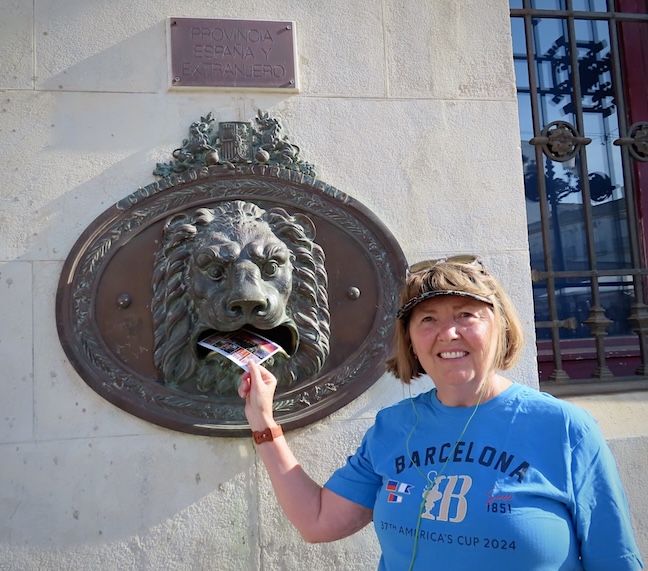
We loved this ornate postal slot for mailing postcards to family.
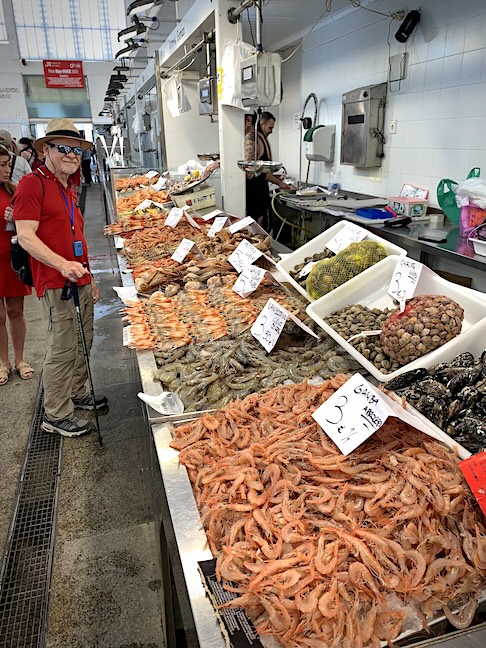
The Central Market of Cádiz is the perfect place to mingle with locals going about their daily lives. There are over 100 food stands offering vegetables, meat, and fruit. In a port city, the freshest seafood possible is available.
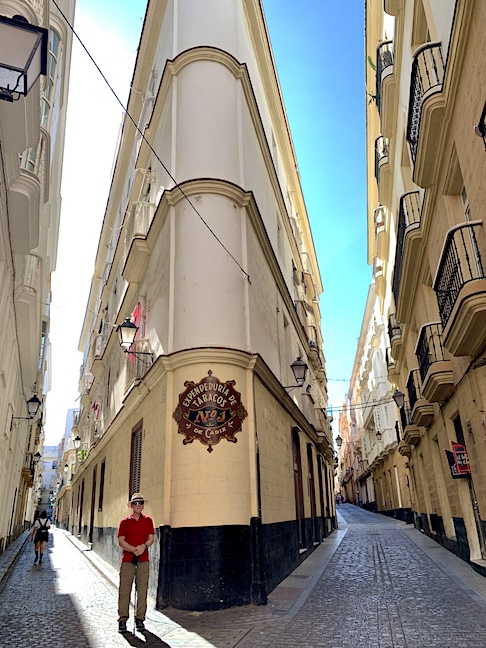
The narrow streets mean no vehicle traffic to harm lost walkers and keep the hot sun at bay except for high noon. The many curves and abrupt direction changes are designed to mitigate high winds off the sea.
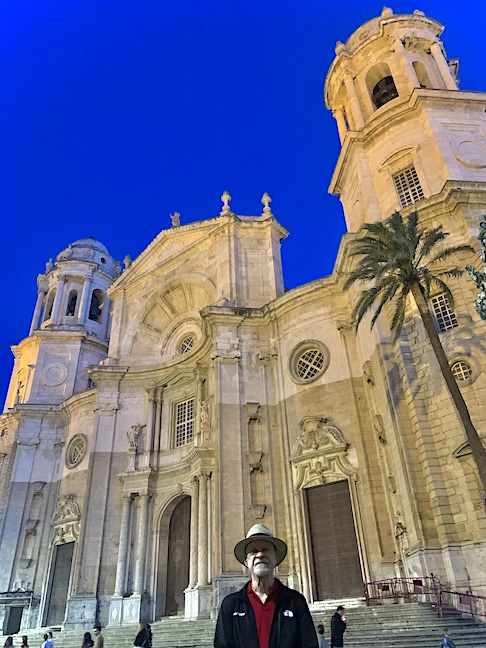
No significant Spanish city is apt to be without a huge church, and the Cathedral of Cádiz is no slouch. Built between 1722 and 1838, it is known as the “Cathedral of the Americas” because money from trade between Spain and America was utilized for building costs.
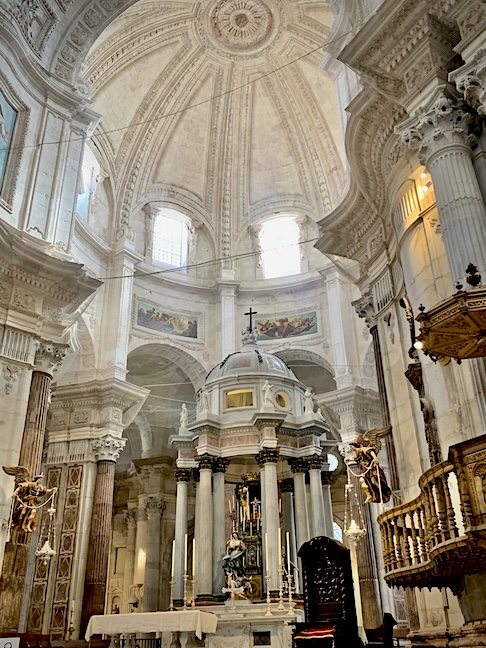
The vaults of the high altar are staggering.
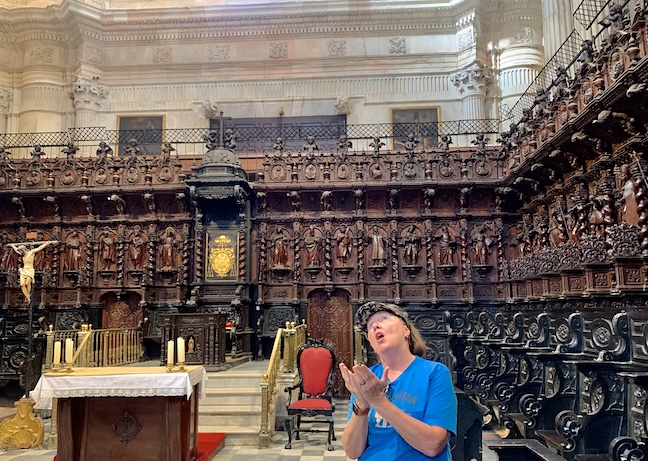
The intricately carved choir is located in the chancel between the altar and nave and is considered the area’s finest.
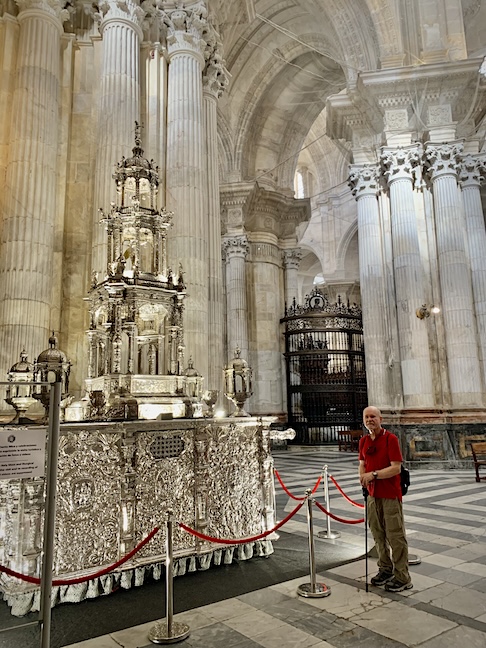
This silver float is used in processions, like the Feast of Corpus Christi. The float mimics Venetian designs that were admired by Spanish artists.
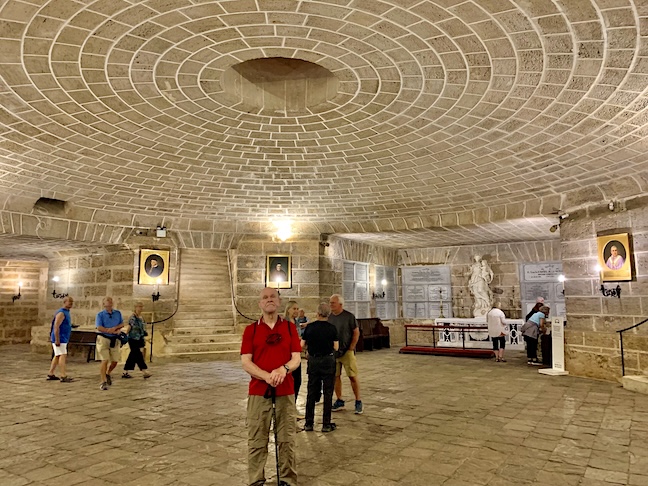
Lots of American churches have basements for socials, but beneath the Cádiz Cathedral is a crypt with awesome acoustics that allow a whisper in the middle of the vault to echo throughout the chamber. The composer Manuel de Falla and poet José Maria Pemán are entombed here along with many bishops.
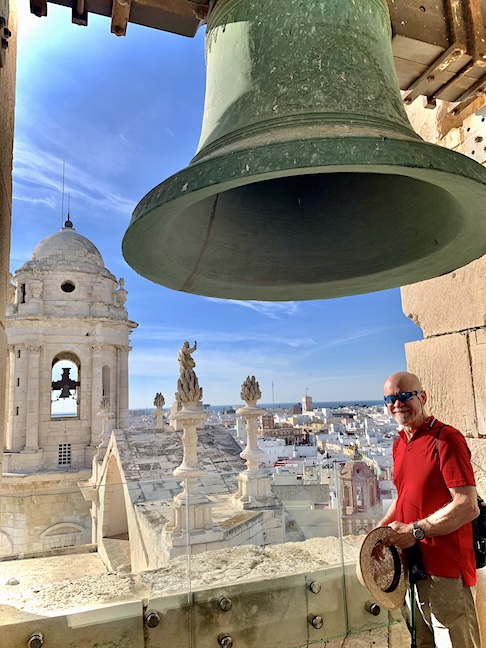
Cádiz Cathedral has an impressive bell tower with a spiral ramp instead of stairs that allowed the bell tender to ride an ass to the top instead of walking. The bells are automated now and ring every 15 minutes. It’s painful to be standing beneath them when the chiming begins.
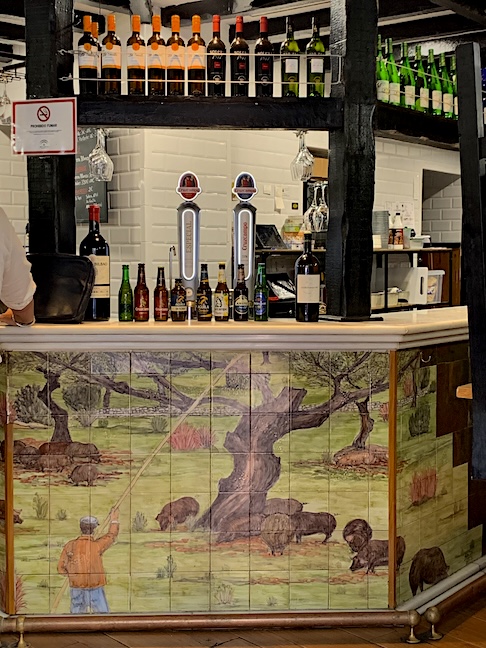
Augustin scheduled an afternoon sherry tasting with tapas event for our group. Spanish Sherry undergoes a unique aging process called “solera system,” where various vintages are barrel blended to create flavor profiles. The wines are aged under a layer of yeast causing the covered wine to age without oxidation. Spaniards take their sherry seriously and It’s tasty and powerful stuff.

Karen and I returned to Caleta Beach for tintos and another fabulous sunset. We wandered the cobblestone pathways after dark until we found a dinner spot with outdoor dining for the warm evening and a street musician playing soothing jazz and popular songs, creating the perfect ambiance. Cádiz’s prices were the lowest we encountered on this trip; the city is clean, safe, and beautiful. It’s no wonder that Cádiz has a large expat population of retirees.

